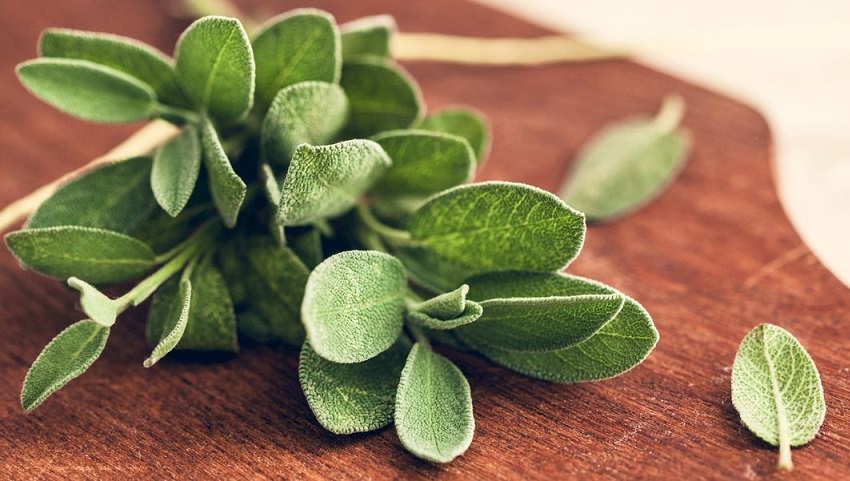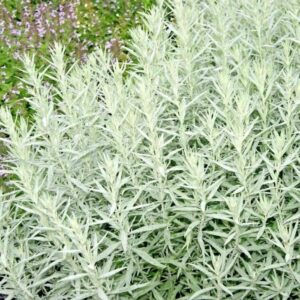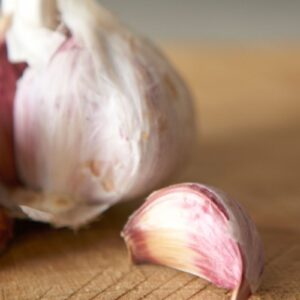Sage can be used dried or fresh. In fact, it is one of the herbs that dry best, keeping most of its flavour. According to the meal you are cooking, it will be better to use it in one form or the other. In some cases, turning to dried sage is something you should avoid. We’ll discuss various instances, what quantities you should use and look at the many health benefits sage can bring to your meals.
What is Sage?
Sage is an herb commonly used to cook around the world. Although you might use it on a regular basis, you may not be aware that it is part of the mint family, which also includes other herbs such as oregano, rosemary, basil and thyme. Its aroma is quite strong, and it has an earthy flavour. That is why it is best used with parsimony when, inserted into a recipe. However, this herb is filled with nutrients and compounds, so feel free to take it out of the pantry, as many times as possible.
When to use Dry Sage?
Before we discuss when to use dry sage, let’s make one thing clear: You should never use powdered sage. Any herb that has been turned into powder is nothing more than decoration. Keep away from that form of herb at all times, and for any one of them.
If you want to use dry sage, you can do so without any problem, when it comes to seasoning pork, sausages, duck, or if you want to add it to stuffing. But there are other meals where you should use only fresh sage. For example, to prepare saltimbocca or porchetta, you absolutely must use fresh sage. It is also true, if you are preparing a sauce for pasta or gnocchi.
What Quantity of Dry Sage to use, compared to Fresh Sage?
The unwritten rule, regarding the quantity of sage to add to a recipe, is that you should use three times more fresh sage than dried one. However, it is difficult to know what it clearly means. Thankfully, we have made the experience of drying sage leaves and crumbling them. The result is that you get four teaspoons of dried sage, for eight leaves of fresh sage. If you are unsure, it is always better to err on the lesser usage of dried sage. You can always add some to the recipe as it cooks, if need be, but be aware that too much of it could literally destroy your dish, as sage can be a strong taste.
If a recipe calls for fresh sage, and you can’t find it at the market: Cook something else. Always use fresh ingredients, as it is the only way your meals will taste how they should. And if you absolutely need to have a meal spiced with sage, pick a recipe that asks for dried sage.
What are some of the Most Important Health Benefits of Sage?
We often cook without understanding the nutritional value of the elements we insert into our meal. However, we have become more aware of the qualities of the ingredients we use, over the last decades. Let’s start looking at sage’s health benefits by describing what it is composed of:
One teaspoon of ground sage contains:
Calories: 2
Proteins: 0.1 grams
Carbs: 0.4 grams
Fat: 0.1 grams
Vitamin K: 10% of the reference daily intake (RDI)
Iron: 1.1% of the RDI
Vitamin B6: 1.1% of the RDI
Calcium: 1% of the RDI
Manganese: 1% of the RDI
It also contains magnesium, zinc, copper and vitamins A, C and E.
Sage is filled with Antioxidants
Antioxidants are important to our health. They help in neutralizing free radicals than can cause chronic diseases. They also keep our skin and nails healthy. Thanks to its 160 polyphenols, sage acts as a great protection. Along with chlorogenic acid, caffeic acid, rosmarinic acid and ellagic acid, it can protect you from cancer and improve your brain function, including your memory. The best way to benefit from the antioxidant effects of sage is to drink a cup of sage tea, two times per day. It will also help decrease bad cholesterol while raising the level of the good one in your system.
Sage can Support Oral Health
Since sage is part of our alimentation, it is good to know that it can also help our oral health. That is because it has antimicrobial effects. Used in mouthwash, for study purposes, it was proven to destroy the Streptococcus mutans bacteria. That is the one causing dental cavities. It also neutralizes microbes that promote dental plaque.
Another study, using sage essential oil, killed or halted the spreading of Candida Albicans. This fungus is also known to cause cavities. Finally, a study also showed that sage can be used to treat throat infections, dental abscesses, infected gums and mouth ulcers.
Whether you use dried or fresh sage, it is bound to lift the taste of your meal, all the while bringing you a large number of health benefits.



